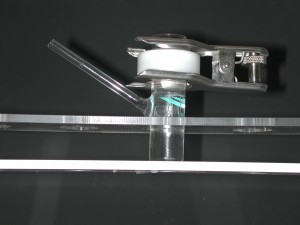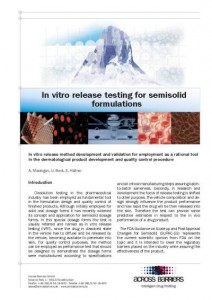 In May 1997, FDA released a guideline entitled Scale-up and Post Approval Changes: Chemistry, Manufacturing and Controls, In Vitro Release Testing and In-vivo Bioequivalence Documentation for Non Sterile Semisolid Dosage Form (SUPAC-SS). The guideline is dedicated to semisolid forms such as creams, gels, lotions, and ointments.
In May 1997, FDA released a guideline entitled Scale-up and Post Approval Changes: Chemistry, Manufacturing and Controls, In Vitro Release Testing and In-vivo Bioequivalence Documentation for Non Sterile Semisolid Dosage Form (SUPAC-SS). The guideline is dedicated to semisolid forms such as creams, gels, lotions, and ointments.
The vehicle composition and design strongly influence the product performance and how rapid the drug will then be released into the skin. An in vitro release rate can reflect the combined effect of several physical and chemical parameters, including solubility and particle size of the API, and rheological properties of the dosage form.
Consequently IVRT offer the possibility to avoid in-vivo bioequivalence testing, for changes until Level 2 (changes which could have a significant impact on formulation quality and performance of the product).
The following questions can be answered by IVRT:
– The formulation undergoes postapproval change and now need approval from regulatory affairs?
– Excipients change is planned in the formulation; how can it influence the release performance?
– The manufacturing site has changed; how can I assess the sameness between the batches produced in site 1 compared to site 2?
– How to obtain predictive estimates in respect to the in-vivo performance of a drug product before proceeding to biopharmaceutical characterization?
– How to obtain a cost-saving formulation screening, reducing the number of candidates for the next development phases?



